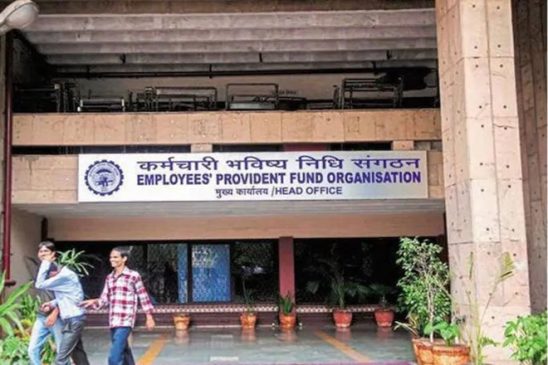The Employees Provident Fund Organization (EPFO) has declared that it has changed the requirements regarding the uploading of an image of a validated bank passbook or cheque leaf in certain qualifying circumstances.
Read More: EPS Pension Benefits: Calculate benefits – Easy Guide
How will EPFO verify claims?
To verify the accuracy of claims, the EPFO instead employs extra verification techniques. These could consist of:
- Online bank KYC verification: Check your bank’s or the National Payments Corporation of India’s (NPCI) KYC details directly.
- Verification of employers via DSC: Your bank account details can be verified by your employer with the use of a Digital Signature Certificate (DSC).
- Verification of the seeded Aadhaar number: Your bank account’s Aadhaar number will be validated by UIDAI.
This will help expedite the online claim settlement process and lower the number of claims that are rejected because the online claim was submitted without the image of the attested bank passbook or cheque leaf.
According to the EPFO circular dated May 28, 2024, “With a view to facilitate the speedy settlement of claims filed online and to reduce the rejection of claims due to the reason of non-uploading of the image of cheque leaf/ attested bank passbook while filing claims online, it has been decided with the approval of the CPFC to relax the requirement of mandatory uploading of the image of cheque leaf/ attested bank passbook for certain eligible cases based on certain validations which include Online Verification of the Bank KYC by concerned Bank/NPCI, Verification of Bank KYC by the employer using DSC, Seeded Aadhaar Number verified by UIDAI among others.”
Read More: How To Withdraw Your Entire Provident Fund (PF) Amount When Changing Jobs: A Step-by-Step Guide
Did EPFO specify eligibility requirements?
It’s possible that the EPFO did not specify the requirements for eligibility. Here are some potential outcomes:
- Validated bank data: You might not need to submit any documentation if your bank data has already been verified through KYC or another technique.
- Sum of claim: The relaxation might apply to claims that fall below a given threshold sum.
The ideal supporting documentation for an EPF claim is an original, cancelled check with the member’s name, bank account number, and IFSC code prominently displayed. To settle your claim, this acts as confirmation of the details of your bank account.
In case your bank account lacks cheque book functionality, the EPFO provides a different approach. A copy of your bank passbook’s first page, duly authenticated (stamped and signed by the bank manager), may be sent. Your bank account number and IFSC code should be included in this authenticated passbook copy.
What is the process for submitting an online claim?
You can file an online claim with the EPFO through the EPFO member site. For the most recent updates, it’s always advisable to visit the official EPFO website, but here’s a general guideline:
Qualifications for eligibility:
- You need to have a valid Universal Account Number (UAN) and be a registered member.
- Your Aadhaar number and bank account number, along with other Know Your Customer (KYC) details, need to be seeded and validated in your UAN account.
Read More: PPF: Triple advantage of Public Provident Fund— explained
How to file an online claim?
- Enter your UAN and password when you visit the EPFO member portal at https://unifiedportal-mem.epfindia.gov.in/.
- Navigate to the member portal’s “Claim” section.
- Choose the type of claim you are submitting (e.g., pension, full settlement, etc.).
- Based on the data you submitted, the portal ought to have your KYC information pre-filled. Verify the accuracy of these details. Updates may be necessary for any disparities.
- Rather than uploading documents, online verification techniques might be used, depending on the circumstances and the most recent relaxation.
- As per the standard operating procedures, you might still be required to upload scanned copies of documents in some circumstances. A cancelled check or an attested copy of a bank passbook could be examples of this (the EPFO website has the most recent information on required documents).
- After you’ve checked and validated the information, submit the claim.
- You ought to be able to keep an eye on the progress of your claim application through the portal.
Other things to know
- For future reference, keep a copy of the online claim you filed.
- Please contact the EPFO helpdesk for assistance if you run into any issues during the process.
These steps will help you expedite the online claim submission process. Additionally, you can verify the most recent information on the official EPFO website.





































